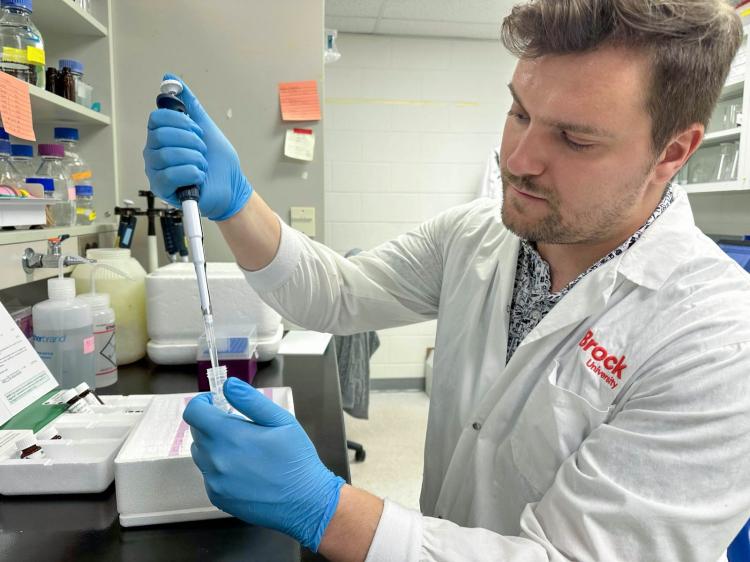Brock University's Reid Ball and Daniel Phillipow are still growing their wine industry careers, but they're already reaping rewards of their work.

Master's student Daniel Phillipow is researching a yeast isolated from Riesling Icewine grapes called Saccharomyces uvarum CN1 to see if can be used to mitigate the negative effects associated with sour-rot affected fruit.
The pair received international recognition at the American Society for Enology and Viticulture Eastern Section's (ASEV-ES) annual conference on July 7 in Athens, Ga.
They were among five students to win a US$1,000 ASEV-ES scholarship to support their studies, and the only Canadians from an area that covers most of the United States and Canada. This follows a US$3,500 scholarship both received in early June from the ASEV's parent chapter.
Ball specializes in the Plant Sciences Oenology and Viticulture stream in Biological Sciences while Phillipow's specialization is in Cell and Molecular Biology.
Phillipow's master's research on a yeast isolated from Riesling Icewine grapes, Saccharomyces uvarum CN1, can further enhance the aroma profile of white wines, allowing wineries to differentiate their products in the marketplace with a Canadian yeast.
"Part of my project is to better understand how wines made from this yeast smell and taste, especially wines made from aromatic white grapes," he says.
Phillipow has found the yeast has a unique ability to consume acetic acid which is found in fruit infected with sour-rot during the wine fermentation stage.
"The other part of my project is to look at the yeast and find if it can be used to mitigate the negative effects associated with sour-rot affected fruit and see if it can consume that acid and make the wine fruitier with beneficial aromas," he says.
According to Phillipow, this would increase the number of desirable wines on the market for consumers and combat financial losses for grape growers and wineries.
With Ball's research, he is attempting to help winemakers branch out when it comes to uses for the Vidal grape. The variety is commonly used for Icewine due to its skin thickness, cold hardiness and ripening time, making it well-suited for cool climates.
"Icewine, which is primarily produced in Canada, has been decreasing in popularity in recent years," says Ball. "It has left growers with a desire to be able to use the grape in something other than just Icewine."
His research explores fermentation strategies that have been reported to increase a class of aromatic compounds called volatile thiols.
By better understanding fermentative techniques to improve the aromatic potential of Vidal, he says wineries will be able to diversify its use and gain additional market share.
"These are a class of compounds that are associated with a sense of passion fruit, grapefruit and gooseberry really consumer desirable aromas," he says.
Ball decided to pursue this path after a discovery early in his research detected volatile thiols in some of the Vidal research wine.
"So, we looked at strategies known to increase volatile thiols in other wines, most notably Sauvignon Blanc, because that's a wine that's really characterized by volatile thiols," he says.
Those strategies included increased and varied fermentation temperatures, the use of specific yeast micronutrients and different yeast strains.
"We then did treatments to investigate the impact of how those all applied to Vidal wine, because nobody else had done it yet," he says.
Ball aims share this research with industry to provide insights on how to improve Vidal's aroma.
"Given that there is a lot of Vidal planted in Ontario, this research will give producers additional tools to make a great table wine," he says.













